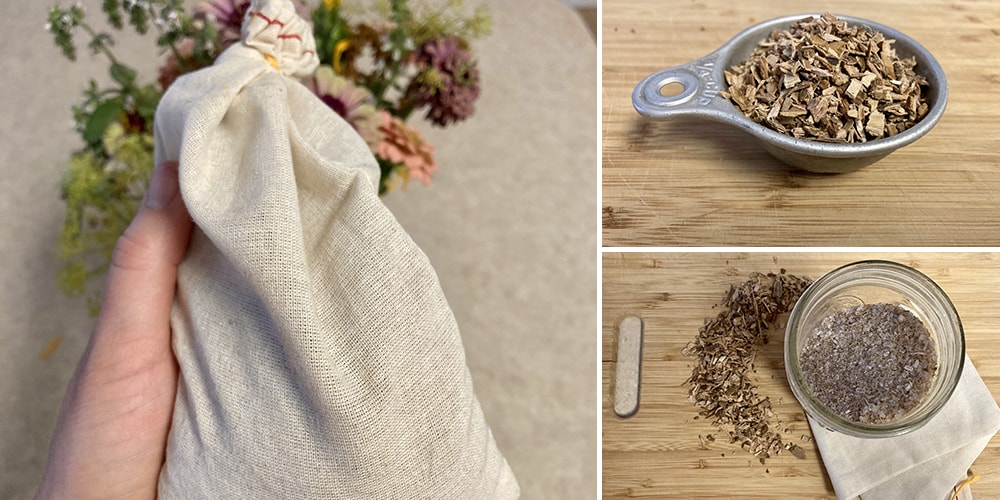
Willow Bark Bath Salts for Inflammation
After a long and hard day, inflammation afflicts us all. And when you’re settling in for the evening, there’s nothing better than a warm bath. Combining the anti-inflammatory power of willow bark with the calming properties of Epsom salt, this recipe is the perfect addition to your bedtime routine. After a soak in this mixture, your achy joints and muscles will thank you. Here, I’ll share a simple willow bark bath salts recipe for alleviating inflammation.
The Healing Properties of Willow Bark
Willow trees belong to the Salicaceae family along with birches, aspens, and cottonwoods. The Salix genus separates over 300 species of willow shrubs and trees that grow in moist and temperate ecosystems around the world. As a whole, the genus is well-known in folk medicine as a source of biologically active compounds. But these two species, white willow (Salix alba) and black willow (Salix nigra) are most commonly used for medicinal purposes.
Willow bark is harvested from the branches of 2–3-year-old trees. The bark is stripped down to the inner layer and then dried.
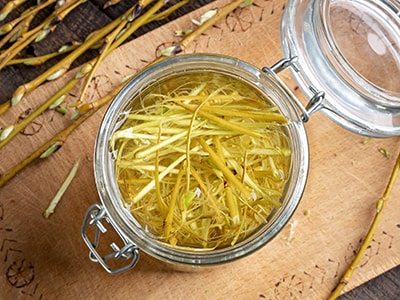 It’s clear from history that willow has time-honored medicinal properties that provide solace from the discomfort of inflammation. Named after the Salix genus, the compound salicin is at the heart of willow bark’s healing properties. Salicin is a precursor to the synthetic compound acetylsalicylic acid, more commonly known as aspirin. This compound functions as a powerful analgesic and anti-inflammatory agent, effectively alleviating pain.
It’s clear from history that willow has time-honored medicinal properties that provide solace from the discomfort of inflammation. Named after the Salix genus, the compound salicin is at the heart of willow bark’s healing properties. Salicin is a precursor to the synthetic compound acetylsalicylic acid, more commonly known as aspirin. This compound functions as a powerful analgesic and anti-inflammatory agent, effectively alleviating pain.
When incorporated into bath salts, salicin infuses the water with its therapeutic qualities and gently eases muscle tension and joint discomfort. As you soak, the salicin permeates your skin, working in harmony with your body’s natural processes to provide relief.
Beyond salicin, willow bark contains an array of flavonoids – naturally occurring compounds renowned for their anti-inflammatory and antioxidant properties. These bioactive molecules play a crucial role in combating oxidative stress and modulating the body’s inflammatory response.
⇒ How to Make Bark Bread from a Tree That Grows on Almost Every Street in America (Video)
Willow Bark Bath Salts Recipe
Though the willow bark is the star of the show, we can’t have a bath salt recipe without mentioning the benefits of magnesium sulfate on joint health. Epsom salts, composed of magnesium and sulfate, have earned their place as a trusted remedy for soothing joint pain and discomfort. When dissolved in warm water and absorbed through the skin, these minerals work synergistically to provide relief. Magnesium, a natural muscle relaxant, helps ease tension, while sulfate supports detoxification processes in the body.
Ingredients and materials:
- 1 cup Epsom salt
- 1/4 cup dried willow bark (finely ground)
- 10-15 drops of your favorite essential oil (lavender, chamomile, or eucalyptus)
- Glass jar
- Muslin bag
Method:
Step 1: Grind willow bark
Measure out ¼ cup of willow bark, then grind it in a spice grinder for at least 30 seconds. When adding herbs to bath salts, you can choose to leave them whole or grind them into a powder. 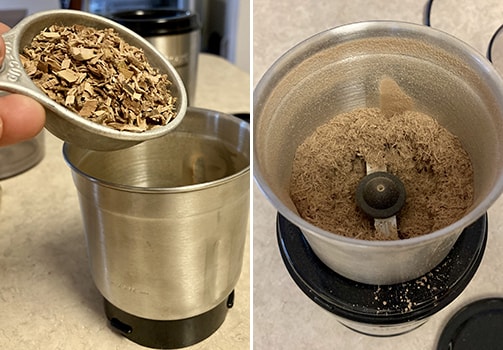
Step 2: Mix with Epsom salt
In a mixing bowl, combine the Epsom salt and the ground willow bark. Add the essential oil drops to the mixture and blend thoroughly to distribute the aroma.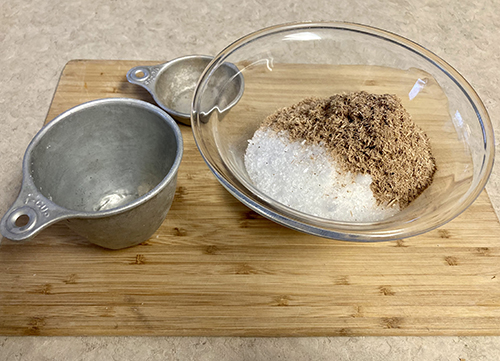
Step 3: Store or Enjoy
Transfer the mixture into a sealed glass jar to preserve its freshness and scent. When ready to indulge in a soothing bath, pour the salt mixture into a muslin bag and hang it below the faucet. 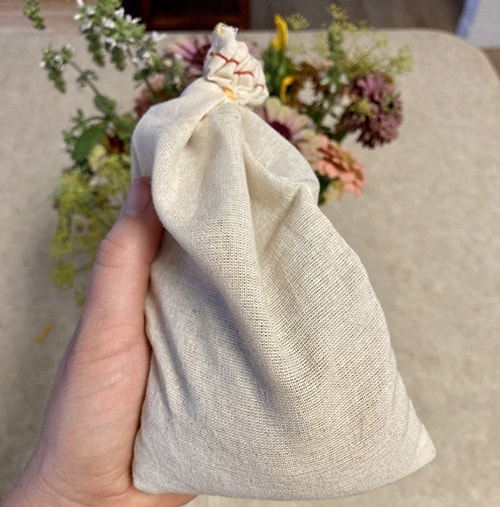
Allow the salts to dissolve, releasing their healing essence. Toss the herbs in the trash after use and rinse the bag so you can use it again later.

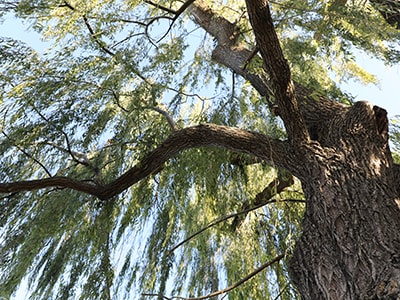
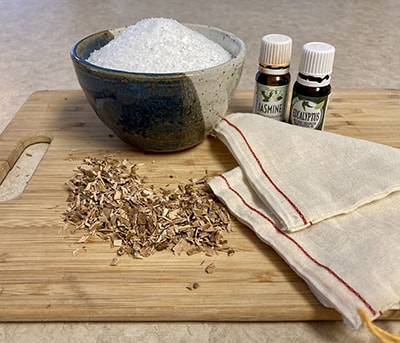
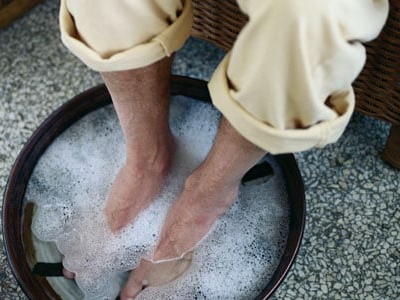
For the Willow Bark bath salts It seems trying to find or continuously grow willow trees to keep a supply of young 2-3 yr old trees/branches available would be very time consuming. Can one just use newer growth of the branches of an older tree?
Hi DeAnn,
Thank you for your comment! Yes, young branches are perfect for harvesting bark.
Many blessings and good health!
How cool! I have a grafted willow (the top is a hakura nisiki willow growing on a base trunk from a different tree (what kind I do not know). It was designed to be a short willow, which is why we got it (and from my wife who has worked for a landscape tree/shrub farm on stateline IL/WI for 20 years.
Every year we cut back about 2 feet off top and wide branches to keep it short, and since we have garden items near it that need the sun. We put it in because it is yellowish (interesting) and it saves me from having to water my middle of backyard grass too-often in summer time and because of our shallow “poor” soil with huge chunks of lime rock not far below.
I have been counting all the edible/medicinal weeds growing in my yard and have identified now about 12, and have tasted some. Now I get to play with my willow and trimming season has just begun.
Great timing on your article. Oh, by the way, my wife said that I cannot plant the top cut willow sprigs in the ground because the tree is a graft. What she meant is that as a hybrid willow I probably would not get a new willow tree from a willow top mounted from a grafted base. If you disagree, please say so. Thanks. I have on my do list for this weekend to trim the willow. Also by the way, I have now about 50-60 song sparrows and little finches who love my willow in wintertime (they winter in Wisconsin, and I buy up 80 lbs of bird seed to feed them every winter (been doing it for 5+ years and now I have multiple generations of the little cute critters. I also get a cardinal family, and junco’s come along in late winter (about 50 of them also). I hate the squirrels who bully the birds. Enough!
Hi, I beg to disagree. The prunings do not care that they grew on a different base. A resultant tree will grow with its same genetics, if I understand you correctly. Good luck!
Hi Radarphos,
Thank you so much for taking the time to share this with us! We really appreciate it.
Let us know if you make these willow bath salts.
Many blessings and good health!
Will any willow work? I live in a desert, and it’s very difficult to keep most willows alive, but we have a desert variety.
I would say yes, basically the area the plants are growing in (naturally) provide the medicine needed for that area.
Hi Rhenda,
All members of the Salix genus produce usable amounts of salicin in their bark. If you have Desert Willow, (Chilopsis linearis), it does not contain salicin but it still has some medicinal benefits.
Tea or tincture prepared from desert willow leaves and bark has antimicrobial properties, particularly effective against fungal infections. When dealing with cuts and scratches, washing them with a solution of the leaf and bark can provide relief.
Many blessings and good health!